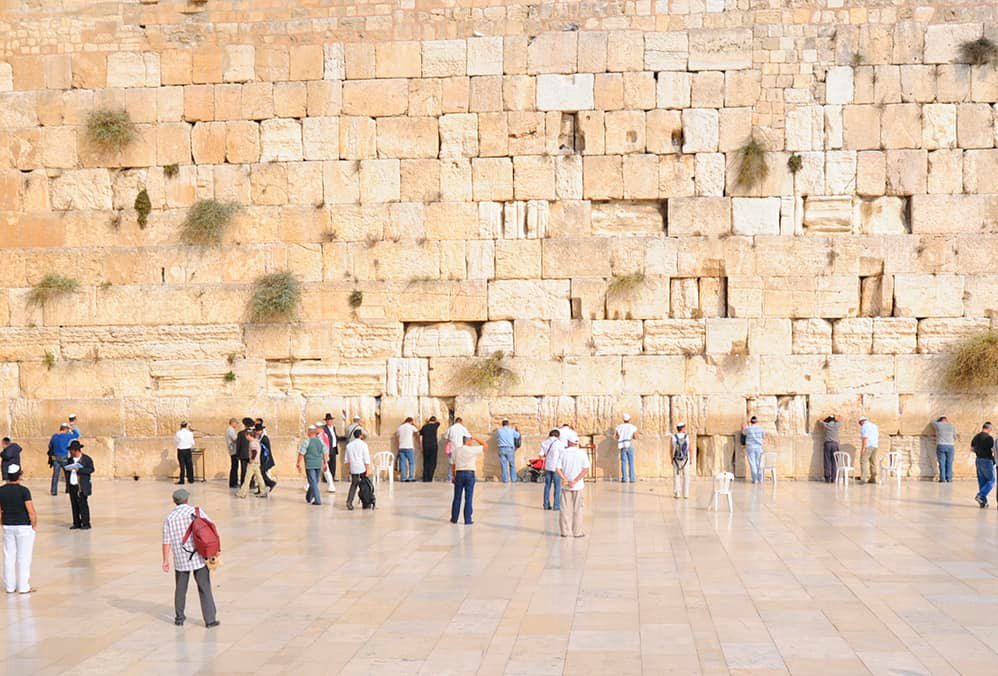


Explore magical Israel’s History with us. The riches of the Land of Israel are manifold, combining breathtaking beauty, long and profound histories and superb modernity’s, enabling perfect rest and relaxation conditions and allowing you to have a once in a lifetime holiday.
Thanks to its relatively small size, Israeli locations are all fairly accessible, with Eilat perhaps being the one exception. As you visit Israel, you’ll start to realize that you are in fact traveling between layers of history, starting with ancient crusader castles, through ports which were temporary homes to many a seaman, pilgrim, and famous traveler; continuing with desert landscapes that housed nomadic tribes, semi-forgotten armies, and merchants riding in camel caravans; to magnificent tombs of sheikhs, impressive domes, silent monasteries and unique synagogues decorated colorfully by mosaics.
The Land of Israel during the Biblical Period
The first to settle the Land of Israel was the Canaanite tribes and they continued to be its principal inhabitants up until the second millennium BC. As early on at this point in time, the country was already providing a meeting place for many different cultures, as it shared borders with Egypt to the south and Assyria, Mesopotamia and Asia Minor to the north and east. During this era, several nomadic tribes had begun to descend upon the country, amongst them the Philistines, who originated from the Aegean area and settled in Israel’s southern coastal plain, as well as the Hebrew people, whose origins lay in Mesopotamia and who mainly settled around the hills.
The latter, who were also known as the Sons of Israel, lived within a framework of twelve tribes and they eventually united into one nation towards the end of the second millennium BC by the man who became the first Israeli king, Saul. He was succeeded by King David, who expanded the country’s borders and turned Jerusalem, which had previously been a Jebusite city, into the kingdom’s capital. It was at this spot that his son and successor, King Solomon, built the Temple where the Holy Ark was to be kept. Following the death of King Solomon, the Israeli kingdom was divided in two, with the majority of the tribes setting up the Kingdom of Israel in the north while the remaining minority established the Kingdom of Judea in and around the Jerusalem mountains. During the year 721 BC, the Kingdom of Israel was conquered and destroyed by the Assyrian Empire; its tribal inhabitants were sent into exile and their fate is still unknown, earning them the intriguing title of “lost”. The kingdom of Judea survived only to be conquered by the Babylonian Empire in the year 586 BC, leading to the destruction of the Temple as the People of Israel were sent into their first Babylonian exile.
The Roman and Byzantine Period
During the year 539 BC, the Babylonian Empire was conquered by the Persian one and the exiles from the Kingdom of Judea were allowed to return to the Land of Israel. Jerusalem’s ruins were re-constructed and the Second Temple was erected on the same spot where the First Temple had stood. Around the year 333 BC, the Persian Empire, including the Land of Israel, was taken over by Alexander the Great from Macedonia, and in the year 66 BC it was conquered by Roman armies led by their famous general, Pompey. In the following 200 years, the land was ruled by Roman-appointed Jewish kings and it served as a Roman vassal state. These were difficult times. In the year 70 AD, a failed Jewish rebellion led to the destruction of the Second Temple and during the year 135 AD the Jews who lived in this land were sent into another exile as punishment for an additional rebellion. Jerusalem’s destruction was far more extensive this time around, and upon its ruined foundations, a Roman city was set up.
It was under Roman rule that Jesus, known as the Christian messiah, son of God and founder of the Christian Faith, was born, yet it took 300 years until Christianity was decreed legitimate within the Roman Empire, as its eastern and western parts separated and the former became Byzantium.
Later on, Christianity was upgraded from a legitimate religion to the Empire’s official one and with this new status, the importance of Israel as the Holy Land also developed. The country became a destination for pilgrimages and a multitude of building projects set out to fill the city and land with churches and monasteries. As part of this building enterprise, the Church of the Holy Sepulchre in Jerusalem and the Church of Nativity in Bethlehem were built. Remains of the era’s building can be seen at such sites as Ovdat, Capernaum, Khamat Gader and Latroun.
The Struggle between Muslims and Crusaders
During the year 640 AD, The Muslim Caliph, Omar, was next to conquer the land and thus usher in the period of Muslim rule here. This led to the opening of new communication channels between the east and the west, as various goods, religious art and cultural and scientific knowledge began to flow between these two worlds and mutual enrichment was enabled.
It was from Jerusalem that, in accordance with Muslim tradition, the Prophet Mohammed ascended his way into heaven and it is this journey that earned the city its perception as being the third holiest to Islam. During the first years of Arab control, Christians were free to enter Jerusalem. This fact was modified starting with the 11th century, prompting Pope Urban II to summon believers and call for a crusade to liberate the Holy Land from the Muslims.
The year 1099 AD marked the end of The first crusade as Jerusalem was captured by the Crusaders. The following era saw the country become one of the most important commercial centers of the world, connecting routes of commerce from China, India, Madagascar, and Africa to markets in Europe. The crusader towns became meeting points for Muslim and Armenian Christian merchants with their European counterparts. The remnants of these crusader cities can be viewed in Akko, Caesarea, Jerusalem, Latroun and Kil’at Namroud.
For all of its importance, this era did not continue for long. In the year 1187 AD, the crusader armies were defeated by Saladin in the battle of Karnei Khitin. The crusaders went on to lose successive battles which ended with their final defeat to the Mamluks in the battle of Akko, the last stronghold under their control, in 1291 AD. Despite their victories, the Mamluks couldn’t stop the country’s diminished stature and importance in the fields of economy and politics. This was only furthered following the Ottoman conquest of 1517. The Land of Israel was now a backwater in the Ottoman Empire and except for very few pilgrims of the three Abrahamic religions, traffic and commerce between east and west declined.
From the British Mandate to the creation of the State of Israel
Another turning point from the perspective of the country’s importance came when Napoleon conquered it in 1799 AD. His eastern campaign revealed to the west how great the country’s strategic and economic importance was – a process that led to increased European involvement in the region. New routes of communication, commerce, and travel started to be set up and Christian diverse missionary institutions were being built all across the country. More pilgrims began to visit and Jews once more started to immigrate to Israel.
Coupled with additional events, this led to increasing interest in the country, which peaked when the British were given in 1918 a mandate to rule the land at the end of World War I.
Exactly thirty years later, in 948, the British Mandate came to its ending and the modern State of Israel was founded. Its establishers stated in the Declaration of Independence: “The State of Israel will be open to the immigration of Jews and for the Ingathering of the Exiles from all countries of their dispersion; will promote the development of the country for the benefit of all its inhabitants; will be based on the precepts of liberty, justice, and peace… will guarantee full freedom of conscience, worship, education, and culture; will safeguard the sanctity and inviolability of the shrines and Holy Places of all religions…”
The State of Israel, which was set up at the meeting point of continents, history, and cultures, is a perfect embodiment of this rich web of cultures. Its population includes diverse people and religions, as well as religious and secular individuals of all faiths, Arab Muslims and Arab Christians, Druze, Bedouins, Circassians, Samaritans, and Jews from no less than 70 Diasporas, spanning from East to Western Europe, North Africa, Asia, as well as North and South America. The people have settled all over the country, starting with the Negev, Arava, Galilee and even the coastal plain, while their modes of the settlement included moshavim, kibbutzim, vivacious cities and quiet villages busily engaged in industry and commercial efforts, farming, and scientific research. All of these put together, cultures, peoples, and religions, have come to create a rich tapestry filled with tradition, beliefs, and customs that embody the holy and the secular, past with the present, east and west.
